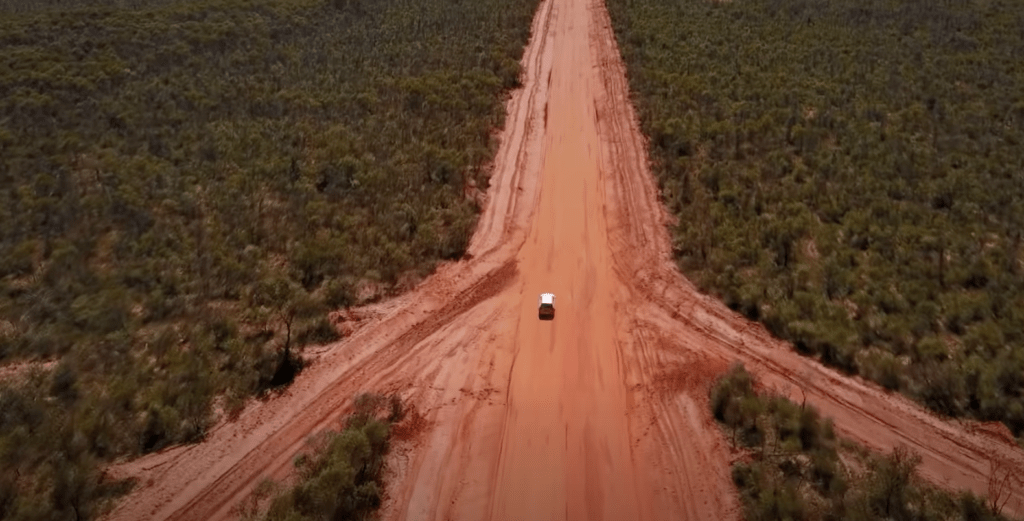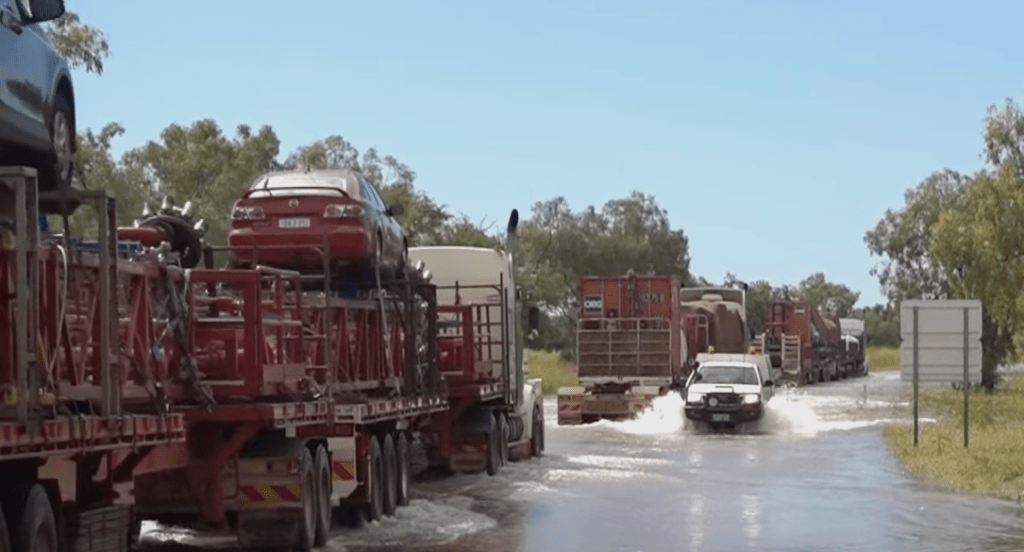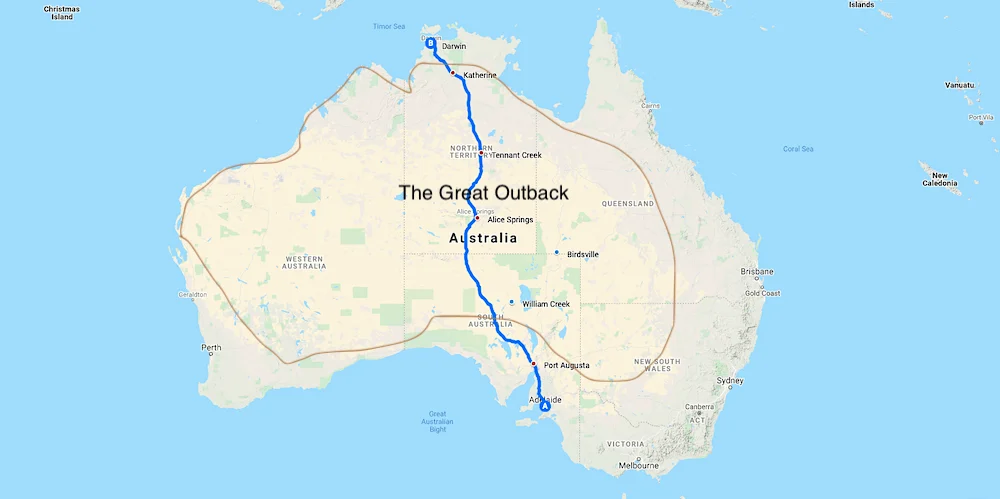There is no other physical phenomenon that comes close to the Australian Outback in a number of ways.
It would not fall under the wonders of the World such as the Pyramids, the Great Wall of China or the Taj Mahal. Neither will it fall under some breathtaking natural wonders of the World such as the Grand Canyon, the Great Barrier Reef, Mount Everest or Victoria Falls.
But it stands out for Australians at somewhat of a spiritual level. We know it is there and that it needs to be respected.
Foreigners seem to draw a blank. They have heard of road trains, cattle drives and aerial musters but the backdrop is not taken in. They can’t seem to make the connection. For example the road train is because of the Outback and that the Outback created it. The same with aerial mustering.
The word ”Outback” is an adverb that became a noun. The word “Great” is to show that it is not just a noun but a huge presence.
When I wrote an earlier post about Adelaide being the gateway to the Great Outback, I thought its best to have a post dedicated to the Outback.
The harshness

The Australian Outback is massive taking up 70% of the continent. And has impact on nearly every Australian whether we realise it or not.
It sits in the backyard of every Australian city with the exception of the island state of Tasmania.
It also delivers unmatched bounty like no other physical formation anywhere in the World. Minerals from iron ore to pink diamonds and opals , to grazing land for the export markets.
In all that, cattle stations that are bigger than some countries are a feature. The largest is Anna Creek Station in South Australia. It is the world’s largest covering 23,677 sq kms. The nearest town is Coober Pedy, 160 kms. It was established in 1863. It can carry 16,000 heads of cattle at good times and in times of droughta nd floods, it can be de-stocked. The ravages of an arid and desert climate.
The Outback is inhospitable, unwelcoming and unfriendly yet is has been home for some for over 65,000 years. And it continues to remain a home for some.
Despite the description above, the Outback continues to be a hive of activity. This is along major roads and at junctions along the Stuart Highway. Step away from this artery and the scene changes quickly and consequences dire.
It is also charming, has some amazing and breathtaking scenes and landscape that are unique and beautiful. Yet it continues to stump and challenge all those who enter it just as it did to the first explorers.
10 deserts and a sealed highway

The Outback is home to 10 deserts. And two are major. The Great Victoria Desert and the Great Sandy Desert. With the exception of one sealed road running from Adelaide to Darwin in the North, everything else is transitionary.
Despite the often used terms and descriptions such as remote, desolate, harsh and arid, the Outback has a remarkable range of wildlife and vegetation. Both native and introduced species. The ability to survive and multiply reveals a story in itself. One of the key factors is the irregular rain and the floodplains it creates when it does rain.
One outstanding feature is the feral camel which was introduced as draught animals to open up the Great Outback. Today Australia has the largest population of wild camels in the World, reaching close to a million animals at point in time and culling is done to keep things in check. Despite its harshness, it has variety of native flora and fauna that have adapted to the conditions. Kangaroos, Emus and dingoes are the native fauna.
The presence of dingoes has also led to the building of one of the longest structures in the World, the 5,614 km Dingo exclusion. Its starts in Eastern Queensland pasture lands , cuts across South West part of the Outback into South Australia. Raised to protect sheep stations south of the fence from dingo attacks.
The Great Outback sits geographically behind all the States and beyond what we call the bush. The bush sits between suburbia and the outback. The outer perimeter of the bush is the final marker. After that a traveller has to plan and prepare for the journey beyond. Get it wrong and lives are lost.
Lifelines
The exceptions are the day to day jobs that cover the vast expanse to deliver supplies and public services. Mainly to communities and commercial operations such as cattle stations, roadhouses and mines.
There are 2 major transport arteries that cut thru the centre of the Outback and sustains life for those who work and live there. The Stuarts Highway and the railway, both running North to South from Darwin to Adelaide with the one major town, Alice Springs in the red centre. There are also a series of historic tracks that continue to be used to connect cattle stations and outlying communities.
First Australians

The Outback has always been occupied and home for over 65,000 years.
Aboriginal communities continue to exist in the Outback. For many its their ancestral home. And they are not concentrated in one particular area. They are spread across not just the Outback but across the continent. In pocket size communities.
They know the lay of the land in great detail. Have an intrinsic knowledge of flora and fauna for food and medicinal remedies. They have worked out the weather and climate patterns and are in tune with ebb and flow of the land.
Survival
Knowledge is around water and food sources and that includes temporary and permanent sources. Water holes faraway from their communities that needs to be reached in times of prolonged drought are also part of their memory map.
The knowledge of waters holes for long treks across the vastness over weeks is indeed remarkable. Miss one or if it becomes dry, it becomes perilous to continue.
These mental maps and memories are pass down from generation to generation over centuries. What is more intriguing are the some of the water holes cannot be seen. Those with the knowledge would identify the spot and some level of digging is required to reach the source.
When you read up on how the aboriginal communities allow marriages to take place, it becomes clear. That practice allowed them to survive for thousands of years. The avoidance of consanguineous marriage is indeed remarkable and this despite the sparse population numbers and the harshness of the land. And they have done it for thousands of years.
Managing expectations

The Outback and its elements routinely wash out roads, tracks and bridges and they become impassable. Land passage is taken over by aircraft to reach remote communities.
Massive swathes of areas which were bone dry with no vegetation for months and years become inundated within hours. And there is a limit to weather and climate predictability even with latest technology.
Road closures by the authorities are part and parcel of dealing with the Outback. It stops people getting into danger and preserves roads and tracks from being washed away. When the floods recede and land surface dries. life resumes. And depending on the season, it maybe for weeks or months. It time for small plane traffic to take over and connect people and community.
Even well planned journeys with the right vehicle and well stocked with fuels and supplies makes the news every now and then. Rescue parties are launched and survivors are sometimes airlifted due to the remoteness and distance that need to be covered. It can be also be due to access roads becoming impassable.
An Australian identity
The outback is a integral part of Australian heritage and identity.
You cannot separate Australia from the Outback and the Outback from the Australia. History, folklore and the Arts are all intertwined.
As a tourist walking thru any Australian city you would come across something or someone that is linked to the Outback. It could be a name, brand, drawing or symbol of the Outback. It appears in pubs, mall, pedestrian walkways, gardens and in public buildings. Some are easily noticeable and some are not.
And they all point to the Outback as a form of Australian identity, association and respect. Its in the Australian DNA.
